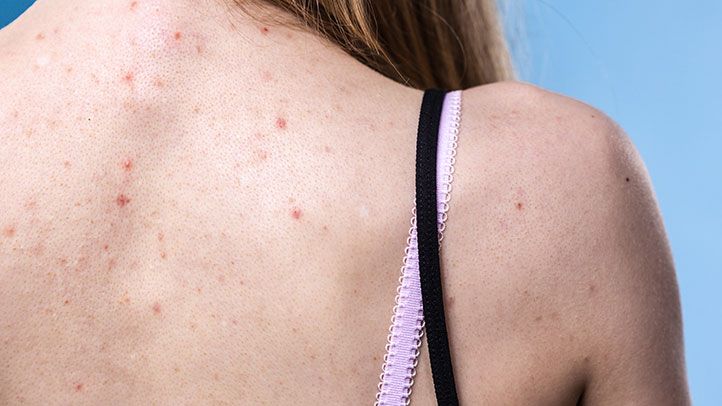Understanding Purple Wipes in Hospitals
Hospitals utilize a wide variety of cleaning and disinfecting products to maintain hygiene and prevent the spread of illness. One type of product that has grown in popularity in recent years is purple wipes.
What Are Purple Wipes?
Purple wipes, also sometimes called purple tops, refer to pre-moistened disinfectant wipes that are purple in color. They are single-use wipes that are disposable after each use. The purple color comes from the disinfecting solution impregnated into the wipe, which typically contains chemicals like sodium hypochlorite or quaternary ammonium.
The most common brand of purple wipes used in hospitals is Sani-Cloth AF3 Germicidal Disposable Wipes by PDI Healthcare. These wipes contain a 3-in-1 disinfecting formula that cleans, disinfects, and deodorizes in one step. The active ingredient is a quaternary ammonium compound.
Why Are Purple Wipes Used in Hospitals?
There are several key reasons why purple wipes have become ubiquitous in hospitals:
- Broad-spectrum disinfection - Purple wipes contain disinfectants that kill a wide range of pathogens including bacteria, viruses, and fungi. This allows hospital staff to use one product for disinfecting many types of surfaces and equipment.
- Fast disinfecting - Disinfectants on purple wipes work quickly, often only requiring the treated surface to remain wet for 3-5 minutes to achieve disinfection.
- Convenience - Pre-moistened wipes allow hospital staff to quickly wipe down surfaces without having to mix separate cleaning solutions.
- Standardization - Hospitals can standardize on one type of disinfecting wipe for consistency.
- Identification - The purple color makes the wipes easy to identify as a disinfectant.
Typical Use Cases in Hospitals
Purple wipes are considered an important tool in hospitals' efforts to control infections. Some of the most common uses include:
- Disinfecting patient rooms and surfaces - Wipes are frequently used to clean patient rooms, beds, railings, tray tables, call buttons, chairs, bathrooms, and more in between patients.
- Disinfecting medical equipment - Nurses often use purple wipes to disinfect shared medical equipment like blood pressure cuffs, EKG machines, ultrasound probes, and IV poles between patients.
- Spot cleaning - Purple wipes allow quick disinfection of small spills, drips, and splashes that occur in the hospital.
- Hand hygiene - In a pinch, hospital staff may use a purple wipe for hand hygiene when sinks are not readily available.
Proper hand hygiene practices should still be followed even when using purple wipes for convenience.
Are Purple Wipes Effective?
Studies have found pre-moistened disinfecting wipes to be highly effective at eliminating microbes when used properly. For example, research has demonstrated Sani-Cloth AF3 wipes effectiveness against pathogens like:
- MRSA - Reduced 99.9% of methicillin-resistant Staphylococcus aureus bacteria in 2 minutes
- C. diff - Killed 99.9% of Clostridium difficile spores in 3 minutes
- HIV - Inactivated 99.9% of HIV virus in 1 minute
- Hepatitis B - Reduced 96.8% of hepatitis B virus in 3 minutes
- Norovirus - Reduced 99.9% of norovirus surrogates in 1 minute
By following disinfecting contact times, purple wipes help hospitals prevent transmission of dangerous pathogens that could lead to healthcare-associated infections.
Disadvantages of Purple Wipes
While very useful, some potential drawbacks of purple wipes can include:
- Not cleaning physically - Wipes disinfect but do not scrub away heavy soiling.
- Skin irritation - Disinfectants may cause skin irritation with prolonged exposure.
- Damaging surfaces - Certain disinfectants can damage some surfaces with repeated use.
- Not eco-friendly - Wipes produce non-biodegradable waste.
- Drying out - Wipes may dry out before expiration if packaging is not well sealed.
Hospitals should rotate stock to ensure wipes maintain wetness and train staff on proper handling techniques to prevent skin irritation. Surface compatibility should also be verified.
Best Practices When Using Purple Wipes in Hospitals
To maximize effectiveness and safety, hospitals should follow certain best practices when using purple wipes:
Train Employees
Educate all employees who will use purple wipes on topics like:
- Proper use techniques
- Required contact times for disinfection
- Proper disposal
- Skin health and protection
- Proper hand hygiene practices
- When to use alternatives like bleach wipes
Use Properly
- Read labels and follow contact time requirements.
- Wipe in overlapping back-and-forth strokes.
- Change wipes frequently to prevent cross-contamination.
- Ensure treated surfaces remain visibly wet for the full contact time.
- Discard used wipes immediately in proper hazardous waste disposal.
Store Securely
Follow storage guidelines to prevent wipes from drying out before use:
- Store in cool, dry place away from sunlight.
- Seal containers tightly between uses.
- Do not top off or mix used and fresh wipes.
- Adhere to expiration dates.
Use PPE
Employees should utilize protective gear when disinfecting:
- Gloves
- Gowns
- Masks as needed
PPE protects against disinfectant skin exposure and potential splashes.
Select Appropriate Surfaces
Only use wipes on surfaces that can withstand repeat exposure to disinfectants without damage. Avoid use on:
- Brass, copper or marble surfaces
- Floors, walls or unfinished wood
- Leather, fabrics or clothing
- Electrical equipment
Check manufacturer guidelines if surface compatibility is uncertain.
Conclusion
Purple wipes are a simple yet effective disinfecting tool for hospitals working to prevent healthcare-associated infections. By following proper use and storage procedures, rotating stock appropriately, and exercising caution, hospitals can safely leverage the bacteria- and virus-killing power of pre-moistened disinfecting wipes. Combining purple wipes with other cleaning methods and good hygiene practices can help provide the highest standard of infection control.
FAQs
What are purple wipes used for in hospitals?
Purple wipes are used to disinfect surfaces like patient rooms, beds, chairs, railings, equipment, and more to kill bacteria and viruses and prevent the spread of infections in hospitals.
How do purple wipes work?
The purple color comes from the disinfecting solution on the wipes, which contains chemicals like quaternary ammonium compounds. These chemicals disrupt pathogens' cell structures and kill them on contact.
Are purple wipes effective against COVID?
Yes, purple wipes have been proven effective against the SARS-CoV-2 virus that causes COVID-19 if used properly for the full contact time.
Can purple wipes be used on the skin?
Purple wipes are not meant for use on skin. The disinfectants can cause irritation with prolonged exposure. They may be used briefly for hand hygiene in a pinch until proper handwashing is possible.
How should hospitals store purple wipes?
Hospitals should store purple wipes in cool, dry storage away from sunlight and tightly seal containers between uses. They should also adhere to expiration dates and rotate stock appropriately.
Disclaimer: This article is for informational purposes only and does not constitute medical advice. Always consult with a healthcare professional before starting any new treatment regimen.
Related Coverage
Puberty brings many skin changes. Learn how to create the ideal basic skin care routine for teens to treat acne, oiliness, sensitivity and keep skin healthy....
Some report acne breakouts after starting ashwagandha due to potential hormonal influence on oil glands. Strategies like lowering dosage, changing extracts, skin care and managing stress may help....
Skin popping refers to self-harm by intentionally damaging one's skin for photos shared online. This behavior is driven by trauma, mental illness and the quest for connection....
Get the lifted, toned butt you want by training your upper glutes. Discover the best maximus and medius exercises plus complete workout programs here....
Bacne or back acne often responds well to over-the-counter washes, but severe cases may need prescription medications, professional extractions, lasers, peels, and microneedling to clear skin and minimize scarring....
Learn what causes lip zits and how to get rid of them fast using warm compresses, OTC creams, antibiotics, lifestyle changes and dermatologist treatments....
Trade refined white buns for nutritious whole wheat or low carb burger bun alternatives like lettuce, mushroom caps, nut/seed buns, cheese, coconut flour buns, or protein buns....
Learn about the causes of fungal acne, the importance of using a specialized fungal acne face wash, and tips for effectively treating and preventing stubborn fungal breakouts....
Learn if 50mg spironolactone daily is sufficient for clearing acne. Discover spironolactone benefits, side effects, dosage guidelines and safety monitoring requirements....
Learn where to buy dried graviola leaves and how to use them to make tea. Get info on the health benefits, traditional uses, safety, and side effects of this medicinal plant....








